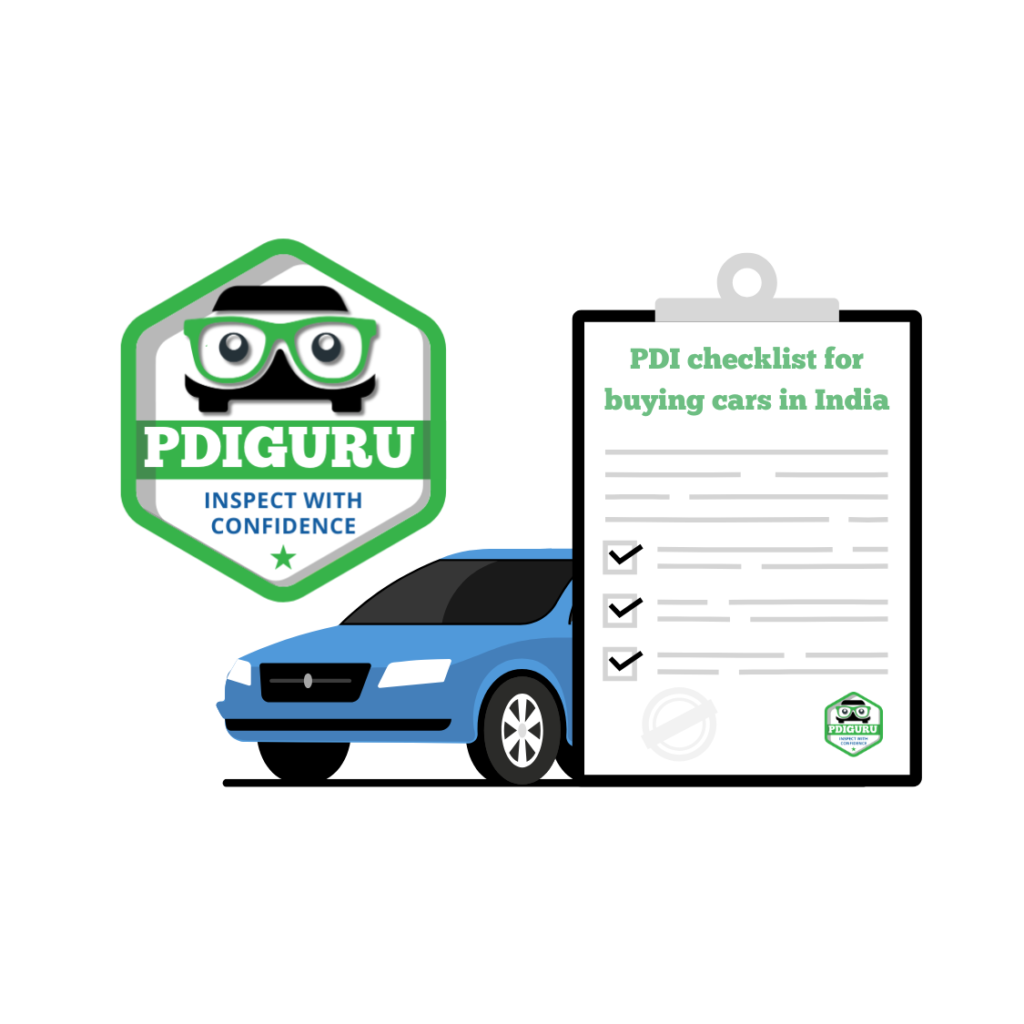Introduction: Know the Issues Before You Handle Them
Purchasing a new car is an exciting experience, but it can quickly become stressful if you encounter issues during the Pre-Delivery Inspection (PDI) process. From minor scratches to major malfunctions, these issues can impact the condition and performance of your new vehicle. In order to handle PDI issues and dealership complaints effectively, it’s crucial to identify and understand the problems before they escalate.
A comprehensive PDI checklist is your first step. By thoroughly inspecting your car, you’ll be better equipped to spot any defects and address them with your dealership. The more informed you are, the easier it becomes to resolve any problems swiftly and confidently.

In this guide, we’ll explore how to handle PDI issues and dealership complaints, ensuring that you get the car you’ve paid for without unnecessary delays.
1. Understand the Problem Clearly Before Raising Concerns
Before jumping into a complaint, it’s essential to identify the issue and understand it clearly. Whether it’s an exterior dent, a malfunctioning infotainment system, or an alignment problem, be sure you know exactly what’s wrong. This will make it easier to explain to the dealership and to ensure the correct action is taken.
PDIGuru Pro Tip
“Take detailed notes of the issue and, if possible, take photos or videos. A visual record will help demonstrate the problem to the dealership and avoid misunderstandings.”
Actionable Steps:
- Inspect the car thoroughly: Use your PDI checklist to carefully check every part of the car, including the exterior, interior, and mechanical systems.
- Note all issues: Note all the problems you find, including possible causes and locations (e.g., dents on the hood or malfunctioning lights) in your PDI checklist.
- Take pictures or videos: Capture high-quality photos or videos of the issues to present during your complaint.
2. Communicate Your Concerns Politely but Firmly

When it comes to handling PDI issues and dealership complaints, communication is key. Being assertive but polite in your approach will go a long way in resolving the problem swiftly. Avoid being confrontational, but don’t let the dealership dismiss your concerns either.
PDIGuru Pro Tip
“Use ‘I’ statements instead of ‘You’ statements when explaining the issue. For instance, say ‘I noticed a scratch on the door’ rather than ‘You gave me a damaged car.’ This keeps the conversation non-confrontational and solution-oriented.”
Actionable Steps:
- Contact the dealership immediately: As soon as you spot an issue, contact the dealership via phone, email, or in person. Time is critical in resolving PDI-related problems.
- Describe the problem clearly: Be specific about the problem you’ve identified. Avoid vague descriptions.
- Be clear about your expectations: Whether you want a repair, replacement, or discount, let the dealership know exactly what you expect.
3. How to Handle PDI Issues and Dealership Complaints by Escalating the Matter
Sometimes, despite your best efforts, the dealership may not take your concerns seriously or may not act swiftly. In these cases, it’s crucial to escalate the issue to a higher authority within the dealership. Many dealerships have a Customer Service Manager or a Service Head who can take over the case if the initial customer representative is unable to help.
PDIGuru Pro Tip
“Always ask for the name and contact information of the person in charge of handling customer complaints. This ensures you’re speaking to someone with decision-making authority.”
Actionable Steps:
- Request to speak to a higher authority: If the initial representative can’t resolve the issue, ask to speak with a senior manager or customer service head.
- Stay calm and professional: Reiterate your concerns politely and explain why you are escalating the issue.
- Document your communication: Keep records of all phone calls, emails, and meetings regarding the complaint. This will be helpful if you need to take further action.
4. Understand Your Rights as a Car Buyer
To handle PDI issues and dealership complaints effectively, it’s essential to be aware of your rights as a consumer. Understanding consumer protection laws will empower you to stand your ground and hold the dealership accountable if necessary.
PDIGuru Pro Tip
“In India, the Consumer Protection Act 2019 offers rights to buyers, including the right to a defect-free product and the ability to seek compensation for damages. Understanding your rights strengthens your position in resolving PDI issues.”
Actionable Steps:
- Review your warranty: Most issues found during PDI are covered under the vehicle’s warranty. Make sure you know what is included.
- Know your rights: Research consumer protection laws in India related to new car purchases to back up your complaint.
- Use third-party inspection if necessary: If you feel the dealership is not addressing the issue properly, consider bringing in an independent inspector to evaluate the car.
5. How to Handle PDI Issues and Dealership Complaints by Seeking a Fair Resolution

At this stage, it’s important to be open to a win-win solution that addresses the issue without causing unnecessary conflict. A fair solution benefits both you and the dealership, ensuring that your issues are resolved without unnecessary delays. The dealership will likely be keen to resolve the issue as quickly as possible to avoid damaging their reputation.
PDIGuru Pro Tip
“Consider proposing solutions that work for both you and the dealership, such as offering to accept a repair or a partial refund. This can help avoid unnecessary delays in getting your car ready.”
Actionable Steps:
- Offer a reasonable solution: Whether it’s a repair, part replacement, or discount on the purchase price, make sure the resolution is fair.
- Be flexible: Sometimes, the best solution might involve compromises. If the dealership agrees to fix the issue, be open to giving them a reasonable timeframe to do so.
- Follow up regularly: If the dealership commits to a resolution, stay in touch to ensure that the matter is being addressed within the agreed timeline.
6. If Necessary, Seek Legal Recourse
If all attempts to resolve the issue amicably fail, you have the option to escalate the matter further, including legal action. Filing a complaint with consumer forums or taking legal action against the dealership can be time-consuming, but it ensures that your rights as a consumer are protected.
PDIGuru Pro Tip
“Before going to legal channels, ensure you have all documentation, including your original sales agreement, photos, email correspondences, and any reports from third-party inspectors. This will strengthen your case.”
Actionable Steps:
- File a complaint with consumer forums: File a complaint with the Consumer Grievance Redressal Forum or Consumer Court if the dealership is uncooperative.
- Consult a lawyer: If the issue is significant, such as a faulty or unsafe vehicle, seeking legal advice might be a good option.
7. Learn from the Experience for Future Purchases
Once your issue is resolved, reflect on the entire process to learn from the experience. Did you miss any important checks during PDI? Were there red flags in your communication with the dealership? Improving your approach will help you handle future PDI-related complaints more efficiently.
PDIGuru Pro Tip
“Keep a PDI journal where you record any important details about your car’s condition and the dealership’s responsiveness. This will help you stay organized in case you need to escalate issues in the future.”
Actionable Steps:
- Reflect on your experience: Did you miss any crucial checks during PDI? Were there warning signs you didn’t address? Learning from these experiences can make future car purchases smoother.
- Review your approach: Evaluate how well you communicated with the dealership and whether there were areas where you could have been more proactive.

Common Issues Found During Pre-Delivery Inspection (PDI) and How to Address Them
During a Pre-Delivery Inspection (PDI), several common issues may arise that could impact the vehicle’s performance and safety. Some of the most frequent problems include engine oil leaks, worn-out tires, brake issues, and suspension problems. Additionally, electrical system malfunctions, such as faulty lights or power window failures, are often found during inspections. In India, cars may also show signs of corrosion, especially around the undercarriage, due to exposure to humidity and rough road conditions. These issues may not always be obvious at first glance but can lead to costly repairs down the road. To help you identify and address these common problems, we’ve curated a dedicated blog on the Common Issues Found During Pre-Delivery Inspection (PDI) and How to Address Them. Be sure to check it out for an in-depth look at what to watch for when inspecting your new car.
Conclusion: Taking Control of Your PDI Experience
Handling PDI issues and dealership complaints doesn’t have to be stressful if you approach it with preparation and a clear strategy. By thoroughly inspecting your vehicle, understanding your rights, and communicating assertively, you can ensure that your car is in perfect condition when you drive it home.
PDIGuru Pro Tip
“Remember, never settle for less than what you’ve paid for. Your new car should meet all expectations, and it’s your right to ensure it’s in perfect condition. Take control of the PDI process and hold the dealership accountable for their commitments!”
Frequently Asked Questions (FAQs)
If the dealership is unresponsive, escalate the issue to a higher authority within the dealership. If that doesn’t work, consider filing a complaint with a consumer forum or seeking legal action.
While some delays are understandable, excessive delays or unresponsiveness are not acceptable. Set a reasonable timeframe for repairs and follow up regularly.
To ensure a comprehensive PDI, it’s essential to check every detail of your car, from the exterior to the electrical systems. Our Pre-Delivery Inspection (PDI) Checklist for Cars in India covers all key areas, including common issues like scratches, misaligned parts, and tire defects. Download our detailed checklist for step-by-step guidance on performing a thorough inspection. It includes expert tips and space for notes to help you catch potential issues before delivery.
Thoroughly inspect the car yourself, use a professional service if needed, and communicate any issues before accepting delivery. A proactive approach will help you avoid most common issues.
If you’re facing PDI issues or just want to be prepared, download our comprehensive PDI Checklist today!
This handy guide will ensure you thoroughly inspect your vehicle and catch any issues before they become problems.



